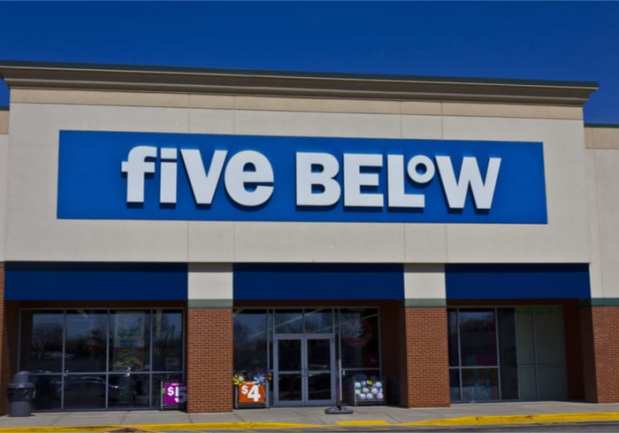Five Below Gives New Fuel To Brick-And-Mortar Retail

Consumers may be curbing their spending, and perhaps even anticipating a new recession, but that could all serve as fuel for certain types of retail expansion — in this case, more brick-and-mortar stores for deep discount chain Five Below. It stands as one recent example of how physical retail is having a bright moment even as commerce and payments become ever more digital.
Five Below in late March, via is newest financial release, disclosed that over the next year it plans to open “approximately 145 to 150 new stores,” while also “assuming an approximate 3 percent increase in comparable sales.”
For the chain’s recently completed fiscal year, comparable store sales increased 3.9 percent, and Five Below “opened 125 net new stores compared to 103 net new stores opened in fiscal 2017.” Net sales for the chain’s 2018 fiscal year increased 22 percent year over year to nearly $1.6 billion — and without anything that resembles more than a basic approach to eCommerce.
Along with developing better product lines and “enhancing” the company’s supply chain, brick-and-mortar store growth is among the top priorities for the chain, according to Five Below CEO and President Joel Anderson. “We are excited to continue our high growth with a record number of new store openings and remain confident in our 20/20 through 2020 goals and our ability to reach our 2,500+ U.S. store potential,” he said in a statement.
Five Below stands as one example of how some brick-and-mortar retail is standing tall as more commerce and payments go digital and mobile. Amazon, of course, is a big part of the brick-and-mortar trend, if you want to call it that, via its Whole Foods acquisition and its Amazon Go cashless store effort.
In fact, one of the hottest battlegrounds in eCommerce involves gaining more presence in the physical world of retail. That’s been recently demonstrated by China-based Alibaba and its reported desire to buy a stake in the Chinese wholesale operations of Germany-based Metro AG. If successful, Alibaba would reportedly take a piece of a cash-and-carry operation that has 95 stores in China, along with “real estate operations in major centers such as Beijing and Shanghai.”
Even longstanding brands are getting in on the brick-and-mortar action, attracted by the chance to better connect with consumers and fans via new retail technology. That seems to have been the case with CoverGirl, which late last year opened its first brick-and-mortar shop in the heart of New York City in the tourist-popular Time Square area. The two-floor shop is designed to be the physical embodiment of CoverGirl’s “I Am What I Make Up” philosophy — meaning the 10,000-square-foot space is built to be what its corporate parents called “an experiential beauty wonderland.”
Five Below, of course, is a much different creature than is Cover Girl. But both efforts, along with other moves, show the ongoing life behind brick-and-mortar retail.
